United States History a Lesson 2 Exam Unit 5 Review & Final
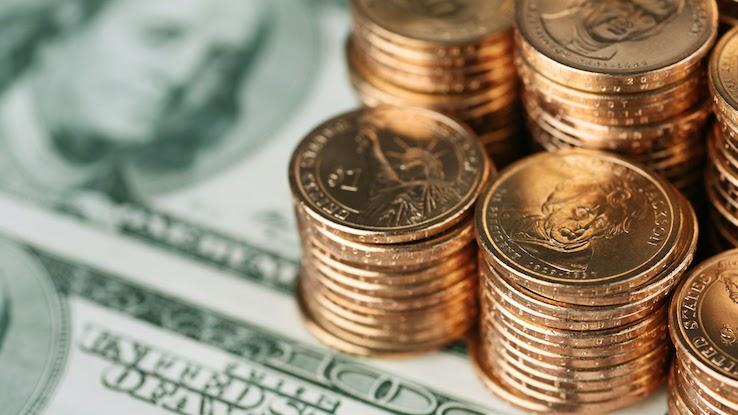
Take a look in your car's cup holders or that jar of loose modify lurking in the kitchen cabinet. Do whatever glints and glimmers of golden catch your centre? If and so, you might count yourself amid the lucky owners of a Presidential $1 — a relatively rare and incomparably novel type of coinage that features engravings of U.S. presidents' faces and the Statue of Liberty, all done upwards in a warm, aureate metal blend that we don't see too often in U.South. currency.
For just a few years in the early on 2000s, the U.S. Mint oversaw the Presidential $1 Coin Programme, which produced special coins that honored, every bit y'all might have guessed, American presidents. But not every U.Due south. head of state ended up with their likeness boldly born in bas-relief on the faces of our spare alter. And that's only 1 element of what makes these coins so interesting. Whether you fancy yourself an aspiring numismatist or an armchair historian, you'll bask broadening your understanding of this U.South. Mint program — and maybe fifty-fifty learning what these coins could be worth today.
Where Did the Thought for the Presidential Golden Dollars Come From?
In 2005, Congress passed the Presidential $ane Coin Act, and Section 101 of the act offers an interesting explanation for the reason why. The Sacagawea dollar coins that were introduced into circulation in the United States a few years before had not proved very popular — people just merely didn't like using dollar coins for transactions. But Congress believed that having a widely circulated $1 coin bachelor was important for supporting certain economic sectors and situations, including "public transportation, parking meters, vending machines and depression-dollar value transactions." If in that location were no dollar coins widely used and in circulation, merchants and vendors would incur greater costs, some members of Congress argued, and after would exist forced to laissez passer those costs on to consumers.
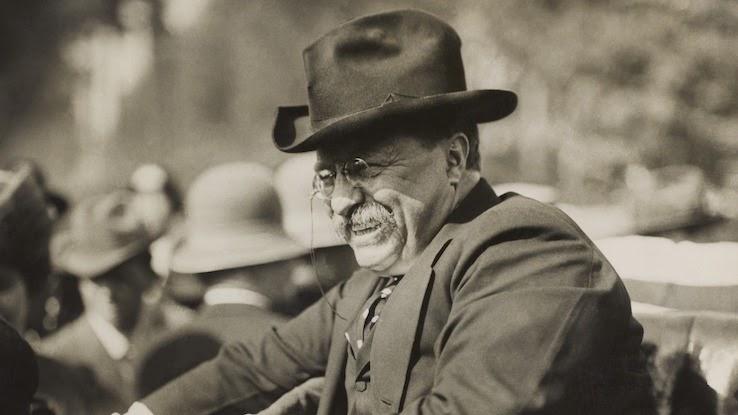
At the same time, Congressional leaders had taken notation of how popular the 50 States Commemorative Coin Program had been — peculiarly from an education perspective. Each coin used state-specific imagery to convey an interesting factoid, pregnant each state's coin was unique. That made the act of collecting them highly-seasoned, also.
Armed with the results of a survey that showed Americans would actively seek a new coin "if an attractive, educational rotating pattern were to exist struck" on it, the Presidential $1 Coin Program was born. However, information technology'southward important to remember that these state coins were quarters, non dollars, and thus didn't face up the aforementioned barriers to widespread use as dollar coins. The presidential golden dollars didn't supersede the Sacagawea dollar coin commencement minted in 2000, either, simply were to be produced aslope that money.
Big plans grew for the presidential dollars, and Congress went well across only creating the program. It stipulated very specific requirements with the goal of returning to the "Gilded Age of Coinage" initiated past President Theodore Roosevelt and spearheading an effort to create coins that didn't only serve as tools for commercial exchange but that were also artful and beautiful.
How Did Congress Program to Return to the "Golden Historic period of Coinage"?
The Presidential $one Coin Human activity of 2005 proposed a listing of specific requirements for the decorative new denomination to encourage a return to a legendary time in history when coins grew to exist regarded every bit art. Six of the many requirements the U.S. Mint and the coin designers were directed to incorporate include the following:
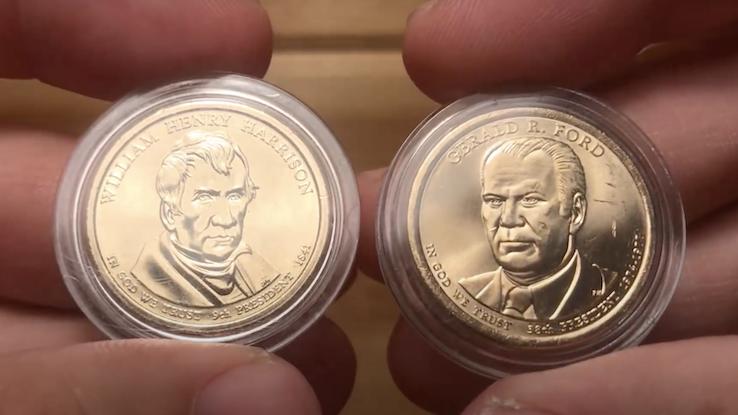
Each coin should exist "an object of aesthetic beauty in its own right."
"Mint marks" such every bit mottos, emblems and the inscription of the year should be placed on the edges to allow for "larger and more dramatic artwork" on the obverse and reverse of each coin.
The "tails" side of the coin would display a likeness of the Statue of Liberty large plenty to be dramatic, simply not and then big that the money would seem ii-headed.
The "heads" side of the coin would bear witness the proper noun and likeness of a president, forth with basic information about that president, including their term(southward) of office and the gild of their menstruation of service.
Each year, $one coins would exist produced to honor four presidents until all presidents were honored.
The projection would be limited in telescopic to deceased presidents, not living current or erstwhile presidents. Featured presidents needed to have been deceased for at least 2 years before appearing on the coins.
So, how were these stipulations meant to hearken back to coinage's purported "gilt age"? A few years after taking office in the early on 20th century, President Theodore Roosevelt sent a letter to so-Secretarial assistant of the Treasury Leslie Shaw explaining how U.S. coinage was "artistically of atrocious hideousness" — a scathing have on the appearance of American money. Roosevelt also asked Shaw if the Treasury would consider employing Augustus Saint-Gaudens, a Beaux Arts-era sculptor, to create some coin designs that better represented the country via their beauty. As a result, Saint-Gaudens created two coins that have go beloved amidst collectors: the $x eagle and the $20 double eagle, both of which featured depictions of Lady Freedom and — yes — eagles.
The requirement for the Presidential $1 coins to feature the Statue of Freedom is a definite nod to the Saint-Gaudens designs and the "golden era" of coinage, but the level of detail — that demand for "larger and more dramatic artwork" — is another. The $20 double hawkeye money reportedly needed to undergo eleven split strikes to bring out the loftier level of detail of the design; the coins' faces were so intricate and their relief so high that bankers couldn't stack them properly. While that wasn't what Congress had in mind when passing the 2005 money deed, that'southward the spirit in which the regime wanted the presidential dollars to exist designed: ample detail and beauty to appropriately laurels the leaders stamped across the coins' faces.
Does Every President Have a Gilded Presidential Dollar?
In total, forty American presidents have been honored with golden presidential dollars. The excluded presidents are Jimmy Carter, Beak Clinton, George W. Bush, Barack Obama and Donald Trump, who haven't been honored on coins because they're still living — and who might not be honored on presidential dollar coins anytime soon. Aside from the fact that they're not deceased, what'south the reason for this exclusion?
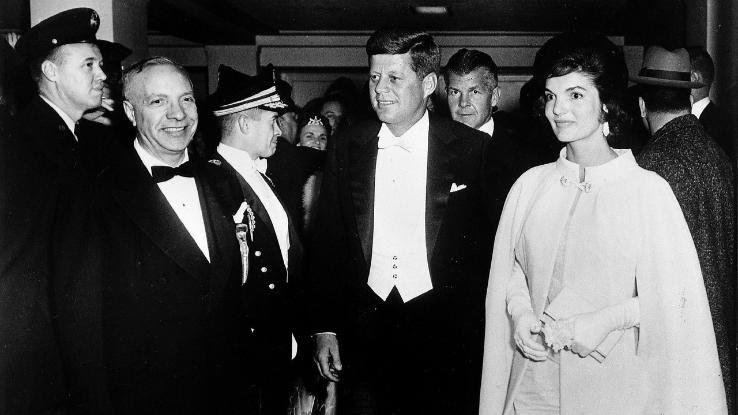
In 2011, Vice President Joe Biden and Secretarial assistant of the Treasury Timothy Geithner paused the Presidential $1 Coin Plan as a price-cutting measure. At the time, the U.Southward. Federal Reserve had stockpiled enough of these $1 coins — more than a billion — to meet demand for at to the lowest degree a decade. Biden and Geithner noted that the decision to finish the program would save taxpayer dollars because, according to a document released past the Treasury, "minting $1 coins that ultimately finish up sitting in Federal Reserve Depository financial institution vaults –— and serve no useful purpose for businesses, financial institutions and consumers— is merely not a prudent apply of taxpayer resources." Ending production of these coins was a move that would help the government achieve its goal of creating less waste and would costless upwards taxpayer money in the process.
By the time the program was terminated, the Mint had produced presidential golden dollars for all deceased presidents upwards to and including Ronald Reagan and would produce no more — save for a 4-year special run of coins produced until 2016 for collectors, along with one other exception. In Feb 2019, Senator John Cornyn introduced a bill for the production of a Presidential $1 money honoring President George H. Due west. Bush. The President George H. W. Bush and First Spouse Barbara Bush Money Act was passed into law in Jan of 2020, and the design of Bush Sr.'s coin was revealed on December 4, 2020.
How Many Presidential Golden Dollars Are Out There?
Over 5 billion golden presidential dollars were produced under the Presidential $i Money Program, not including the money honoring President George H. W. Bush. The U.South. Mint produced the coins at its facilities in Denver, Colorado, and Philadelphia, Pennsylvania. The president honored with the highest total mintage (the number of coins produced) is President George Washington, with over 340,000,000 of these golden coins bearing his likeness having been produced. At the other end of the spectrum, the president with the lowest mintage is Woodrow Wilson at 7,980,000.
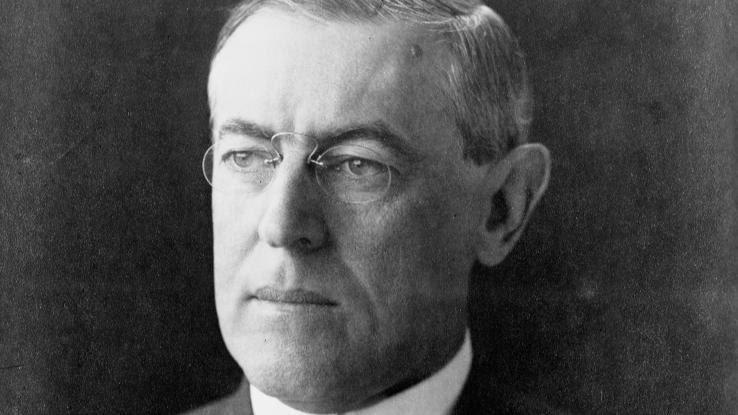
Production numbers dropped significantly midway through the running of the Presidential $one Coin Program. Of the first 20 presidents from Washington to Garfield, no leader was honored with a mintage of fewer than 72,660,000 coins (President Andrew Johnson). Those who served after President Garfield (presidents Arthur to Reagan, skipping President Carter) were honored with far fewer coins. The highest mintage among those presidents was President Cleveland (with two separate runs of nine,520,000 and 14,600,001) followed closely by President Reagan (13,020,000).
Are Presidential Dollars Worth Annihilation?
Today, yous can buy presidential golden dollars from the U.S. Mint at specified times, though the coins are not part of its standard catalog. Until 2011, the coins were distributed past the Mint to banks and financial institutions, only that's no longer the instance. The Mint still releases Presidential $1 coins into the "secondary market," where you can find them bachelor for auction online and from coin dealers. The U.Southward. Mint likewise releases 250-coin bags and rolls of the dollar coins, which are typically available through dealers. For a brief time get-go in 2008, buyers could even order them through a programme chosen the $one Coin Direct Send Program — just the program didn't last as well long.
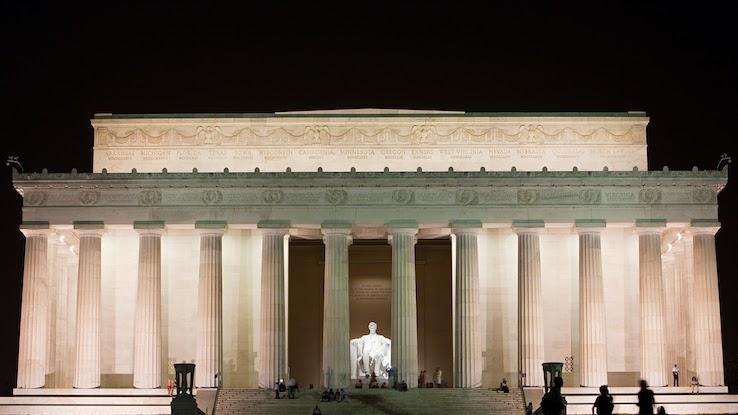
As for their value? Virtually of them are worth the corporeality stamped on their faces — $1. At dealers or from collectors, some earlier-mintage coins may be priced college simply based on the lower number of such coins available. Proof coins, which are samples fabricated to check the dies that cut and stamp the coins, sometimes sell for upwards to $10 apiece. The most valuable of the gilded presidential dollars are those that were produced with errors. I particular 2007 mintage of coins honoring President George Washington had missing edge lettering, which can see those item coins selling for $5,000 or more.
Volition you become rich off Presidential $1 coins? Not likely, but, similar collecting other objects, there's plenty of fun in the chase and in learning the history of these coins and presidents — which, of course, was role of Congress' aim in the outset place.
Source: https://www.reference.com/history/history-united-states-golden-presidential-dollars?utm_content=params%3Ao%3D740005%26ad%3DdirN%26qo%3DserpIndex
0 Response to "United States History a Lesson 2 Exam Unit 5 Review & Final"
Postar um comentário